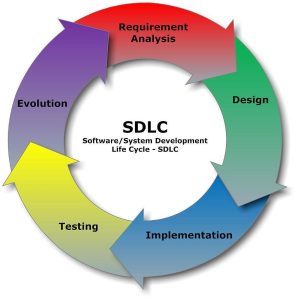Whats in the article
The finance function, a critical component of any
small or medium-sized business, traditionally involves manual, time-consuming
tasks. These manual processes can lead to errors and inefficiencies. For
instance, a simple data entry error can result in significant financial
discrepancies. According to a report by the Association of
Certified Fraud Examiners, businesses lose an average of 5% of their
revenue each year due to errors in financial reporting. This highlights the
need for more efficient methods of managing financial operations.
Benefits of RPA in Finance Operations
Increased Accuracy
RPA reduces the risk of errors that are common in manual processes. By eliminating these errors, businesses can improve the accuracy of their financial reports and make better decisions.
Thermo Fisher Scientific improved their finance operations' accuracy using RPA. They implemented UiPath Document Understanding to automate data extraction from invoices, achieving an initial accuracy rate of 82.4%, with a goal to increase it to 85% or higher. This automation reduced human error in invoice processing, resulting in more accurate financial reporting and improved vendor relationships
Time-Saving
RPA can process tasks much faster than humans. For instance, in an insurance company, a process that used to take two days to manage 500 premium advice notes now takes just 30 minutes with RPA, as reported by McKinsey.
Cost-Saving
By automating routine tasks, RPA reduces the need for human intervention, leading to significant cost savings. The ROI can vary between 30 and as much as 200 percent in the first year, according to McKinsey.
For instance, RPA can cut costs for financial service companies by up to 70%, according to KPMG. The cost of one robot is three times lower than the cost per person dealing with high volume rote tasks. Furthermore, bots handle tasks effectively and error-free, avoiding costs resulting from errors. Even a small investment in RPA provides quick and significant payback, with software robots needing only 4-12 months of timescale to pay back
Gartner estimates that by 2024, organizations will lower operational costs by 30% by combining hyper-automation technologies with redesigned operational processes.
Improved Compliance
RPA can help businesses improve compliance by maintaining detailed logs of all actions and by following the exact process every time, ensuring consistency and reliability in financial operations.
Robotic Process Automation (RPA) can significantly enhance compliance in businesses. For instance, RPA bots can automatically update regulation requirements by scraping policy makers’ websites and updating the organization’s internal regulation databases. This ensures that the business stays up to date with the latest regulations. Moreover, RPA bots perform tasks with 100% accuracy, ensuring consistency and reliability in operations. They also maintain detailed logs of all actions, providing a 100% accurate audit trail that can be referenced when compliance issues arise
RPA Use Cases in Finance Operations for Small and Medium Businesses
Let’s now look at some key outcomes that can be achieved through the implementation- of RPA in the finance function:
Accounts Payable and Receivable
RPA can streamline the accounts payable and receivable process by automating data entry and transfers from third-party or non-integrated internal systems. For instance, RPA can read and compile data from multiple resources and formats into a single view, making it easier to manage and track payments.
Benefits:
- Time Saving
- Improved Accuracy
- Improved Efficiency
Financial Reporting
Financial reporting often involves repetitive tasks such as data validation and inventory tracking. It can also help in maintaining compliance by creating processing audit trails that demonstrate adherence to rules and regulations.
Benefits:
- Reduced risk of human error
- Timely reports
- Improved accuracy
Fraud Detection and Prevention
RPA can play a crucial role in fraud detection and prevention. By automating the analysis of large amounts of data, RPA can identify potentially fraudulent activities more efficiently than humans. For instance, RPA can be used to check the suitability of access data, detect sensitive data stored in unauthorized locations, and respond quickly to malware alerts. In another article we explore more deeply how RPA can be effectively deployed to detect threats and reduce the risk of successful attacks.
Benefits:
- Automated fraud detection and alerts
- Faster response time to attacks
Payroll Processing
Payroll processing is another area where RPA can bring significant benefits. By automating tasks such as data entry and calculations, RPA solves key issues in payroll processing by reducing human error and increasing efficiency. Manual payroll tasks are prone to mistakes, leading to incorrect payments and potential legal issues. RPA ensures accurate, timely payments and compliance with laws, reducing legal risks. It also frees up staff for strategic tasks, improving productivity and operational efficiency. This ultimately leads to cost savings and enhanced business performance.
Benefits:
- Time saving
- Timely release of payments
- Maintaining compliance
Challenges of Implementing RPA in Finance Operations
While the benefits of Robotic Process Automation (RPA) are significant, implementing it in finance operations is not without its challenges. Here are some of the key obstacles that your business may encounter:
Resistance to Change
One of the biggest challenges in implementing RPA is resistance to change. Employees may fear that automation will make their jobs redundant, leading to job loss. It’s crucial to communicate clearly that RPA is not about replacing humans but about freeing them from mundane tasks so they can focus on more strategic, value-added activities. Training and change management initiatives can help in overcoming this resistance.
According to a report by McKinsey, about 70% of change programs fail to achieve their goals, largely due to employee resistance and lack of management support. This highlights the importance of addressing resistance to change when implementing RPA.
Integration with Existing Systems
Another challenge is integrating RPA with existing systems. While RPA is designed to work with a wide range of software, there can be compatibility issues, especially with older systems. It’s important to conduct a thorough assessment of the existing IT infrastructure before implementing RPA to identify potential integration issues and plan accordingly.
Cybersecurity Risks
While RPA can enhance cybersecurity by automating threat detection and response, it can also introduce new risks. For instance, if an RPA bot is compromised, it can be used to carry out malicious activities. Therefore, it’s essential to incorporate cybersecurity considerations into the RPA implementation process, including securing RPA bots and monitoring their activities.
Best Practices for Successful RPA Implementation
Implementing Robotic Process Automation (RPA) in finance operations can be a game-changer for small and medium businesses. However, to ensure a successful implementation, it’s crucial to follow certain best practices:
Establishing Clear Objectives
The first step towards a successful RPA implementation is to establish clear objectives. What do you hope to achieve with RPA? Is it to increase efficiency, reduce costs, improve accuracy, or all of the above? Having clear objectives will guide the implementation process and help measure the success of the RPA initiative. It’s also important to set realistic expectations. While RPA can bring significant benefits, it’s not a silver bullet that can solve all problems.


Involving Stakeholders in the Implementation Process
RPA implementation is not just a technical project; it’s a change management initiative that involves people at all levels of the organization. Therefore, it’s crucial to involve stakeholders in the implementation process. This includes not only the IT team but also the end-users who will be using the RPA system and the senior management who will be overseeing the project. Involving stakeholders in the implementation process can help ensure buy-in, facilitate change management, and ultimately contribute to the success of the RPA initiative.
Identifying and Addressing Potential Roadblocks
Implementing RPA is not without its challenges. Potential roadblocks may include resistance to change, integration issues with existing systems, and cybersecurity risks. It’s important to identify these potential roadblocks early in the implementation process and develop strategies to address them. For instance, resistance to change can be addressed through communication and training initiatives, while integration issues can be addressed through a thorough assessment of the existing IT infrastructure.


Identifying Suitable Processes for Automation
Not all processes are suitable for automation. Processes that are repetitive, rule-based, and involve structured data are ideal candidates for RPA. In finance operations, such processes may include accounts payable and receivable, financial reporting, and payroll processing. Identifying the right processes for automation is crucial for maximizing the benefits of RPA.
Resources
Here are some resources that provide frameworks for IT implementation with respect to RPA:
UiPath’s Guide to Robotic Process Automation: This guide provides a comprehensive overview of RPA, including its benefits, use cases, and implementation strategies. It also offers a step-by-step guide to implementing RPA in your organization.
McKinsey’s Next-Generation Operating Model for the Digital World: This article discusses a new operating model that combines digital technologies and operations capabilities in an integrated, well-sequenced way to achieve step-change improvements in revenue, customer experience, and cost. It provides a detailed framework for implementing this model, which includes RPA.
Insight Consultants: Your Partner in RPA Implementation
At Insight Consultants, we understand the transformative potential of Robotic Process Automation (RPA) in finance operations. We bring together a unique blend of finance domain experts and a development team skilled in creating automation solutions. Our team has hands-on experience with various tools like UiPath, Butler Labs, and more, enabling us to tailor automation solutions to the specific needs of our clients.
We don’t just automate processes; we work closely with our clients to understand their workflow, identify areas that can benefit from automation, and create solutions that not only increase efficiency but also add strategic value. Our approach is not just about implementing technology; it’s about transforming operations and driving business growth.
Below is images of Butler Labs Interface.
Outlook and Conclusion
The future of Robotic Process Automation (RPA) in finance operations is bright. As technology evolves, RPA will become more sophisticated, integrating with AI and Machine Learning to handle complex tasks and make data-driven decisions. With the global RPA market expected to reach $3.97 billion by 2025, it’s clear that RPA will continue to transform finance operations, driving efficiency, reducing costs, and improving accuracy. The journey may be challenging, but with strategic implementation and a focus on best practices, the potential rewards are substantial.





